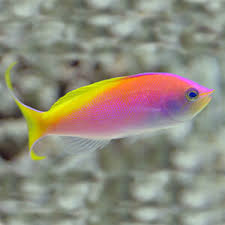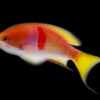The Dragon in Modern Architectural Designs in China

The dragon, a symbol of power, wisdom, and good fortune, has been an integral part of Chinese culture for thousands of years. Revered in mythology, art, and traditions, it is also making its mark in contemporary architecture, both in China and abroad. As China modernizes and grows on the global stage, the dragon has evolved into a key element in modern architectural designs, merging ancient cultural symbolism with cutting-edge construction techniques.
This article explores how the dragon continues to influence modern architecture in China, reflecting both its rich historical significance and its modern-day relevance.
The Dragon as a Symbol in Modern Architecture
In Chinese culture, the dragon represents more than just a mythical creature; it is a symbol of the emperor, the nation, and cosmic harmony. It embodies vitality, strength, and prosperity. As China moves forward in the 21st century, these qualities remain integral to its national identity and are expressed through various art forms, including modern architecture.
In contemporary design, the dragon is often incorporated into buildings, monuments, and structures as a cultural homage to the country’s deep-rooted heritage. Architects and designers draw on the dragon’s symbolism to create visually striking buildings that evoke both tradition and modernity, adding a sense of national pride and identity to China’s rapidly evolving skyline.
The Dragon in Iconic Modern Buildings
One of the most prominent examples of the dragon’s influence in modern architecture is the Dragon Tower in Harbin. Standing as a modern marvel, this skyscraper draws on the shape and form of a dragon coiling upward, representing strength, growth, and protection. The structure’s flowing curves evoke the elegance of a dragon, with its twisting form symbolizing a dynamic force moving forward.
Another significant example is the Shanghai International Financial Center, which features a unique design resembling a dragon in motion. The building is both a functional space and a work of art, representing China’s rapid rise as a global economic power. The sleek, modern appearance of the building, with its towering spires and curved shapes, reflects the strength and agility associated with the mythical dragon.
Moreover, the Dragon Gate of the 2008 Beijing Olympic Games is an excellent illustration of how the dragon’s symbolism can be integrated into modern public works. The gate, with its intricate design, draws inspiration from traditional Chinese patterns and the image of the dragon, symbolizing the nation’s welcoming spirit and its aspiration to shine on the world stage.
The Dragon in Urban Planning and Landscape Architecture
In addition to buildings, the dragon is also present in urban planning and landscape architecture throughout China. Designers often use the form of the dragon to create public spaces that integrate cultural significance with functionality.
For example, the Dragon Bridge in Fuzhou merges traditional design elements with modern construction. This bridge, spanning a river in the heart of the city, is not only a critical transportation link but also a symbolic connection between the city’s past and future. The bridge’s curvilinear design, reminiscent of a dragon’s sinuous body, serves as a visual homage to the creature’s power and its historical role in Chinese culture.
Similarly, the Longmen Grottoes in Luoyang, which are ancient Buddhist caves carved into cliffs, have inspired modern park designs. The flowing curves and dragon motifs used in contemporary parks across China evoke the historical connection to the dragon, while providing green spaces for urban dwellers. These landscapes honor the dragon as a bridge between the natural world and human civilization.
Dragon-Inspired Architecture: Combining Tradition and Innovation
Modern Chinese architecture often seeks to blend tradition with innovation, and the dragon is an ideal symbol for this fusion. Architects incorporate the form, texture, and symbolism of dragons into buildings while utilizing the latest technology and materials.
For instance, the use of glass facades and curved lines in many modern skyscrapers reflects the fluidity and motion associated with dragons. Buildings such as the China Central Television Tower (CCTV Tower) in Beijing feature sleek, twisting forms that evoke the spirit of the dragon. This iconic structure is a striking example of how the dragon can inspire cutting-edge design while honoring cultural heritage.
Additionally, the National Center for the Performing Arts in Beijing (also known as “The Egg”) has a design that symbolizes the dragon’s fluidity through its smooth, oval shape. The use of glass and metal creates a futuristic look while referencing the elegance and flow of the mythical creature.
The Dragon in Public Spaces and Cultural Landmarks
Beyond individual buildings, the dragon continues to appear in public spaces and landmarks. Throughout China, dragon sculptures and statues are common features in parks, public squares, and entrance gates. These symbols of power and protection welcome visitors and remind the public of China’s ancient traditions and cultural identity.
In Hong Kong, the Dragon Sculpture at the Hong Kong Convention and Exhibition Centre serves as both an artistic piece and a symbol of the city’s international reputation. The sculpture, which features a dynamic dragon wrapped around a globe, represents Hong Kong’s position as a global financial hub while honoring the city’s deep ties to Chinese heritage.
In the Tianjin Binhai Library, the design of the building reflects a fusion of traditional Chinese aesthetics and modern architecture. The use of a dragon motif in some parts of the interior, combined with high-tech innovations such as the integration of virtual reality and digital art, makes this library a prime example of how dragons can be part of modern public infrastructure while remaining true to their cultural roots.
The Dragon as a Symbol of Protection in Modern Design
In Chinese culture, dragons are often seen as protectors—guarding families, cities, and the nation. In modern architecture, this protective symbolism is maintained, especially in buildings that serve as cultural institutions, government buildings, or luxury residences.
Many contemporary buildings feature dragon motifs or designs as a symbolic form of protection. For example, the Wuhan Greenland Center incorporates a dragon’s shape into its architectural design, with flowing, serpentine lines meant to represent the dragon’s powerful, protective force. These modern designs reflect a desire to preserve the symbolism of protection and prosperity while embracing a modern, sleek aesthetic.
Conclusion
The dragon’s presence in modern Chinese architecture highlights the country’s deep respect for its history and culture while embracing the future. From iconic skyscrapers to public monuments and urban landscapes, the dragon continues to be a powerful symbol of strength, protection, and good fortune. Through innovative designs that combine ancient motifs with cutting-edge construction techniques, modern Chinese architecture demonstrates how the dragon can remain relevant in the contemporary world.
As China continues to grow as a global powerhouse, the dragon serves not only as a reminder of the nation’s rich heritage but also as a symbol of its ambitious future—shaping the country’s skyline and cultural landscape for generations to come.

